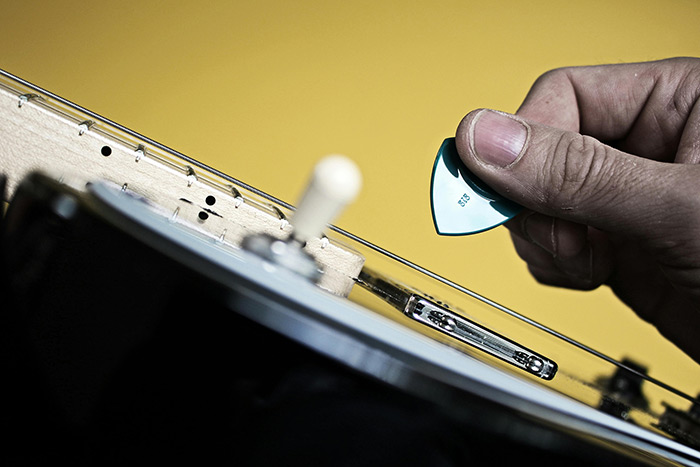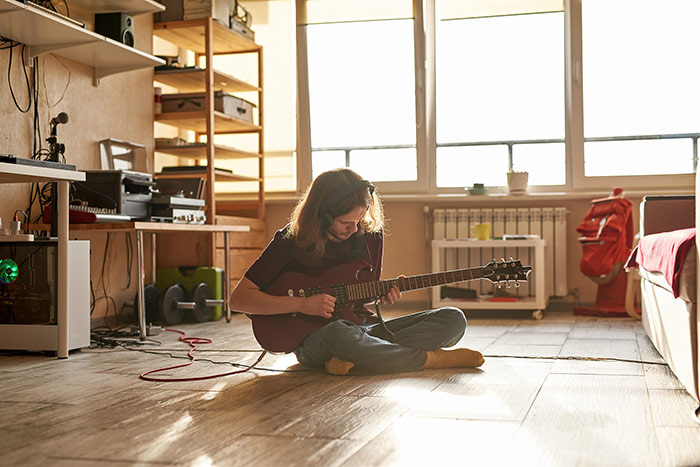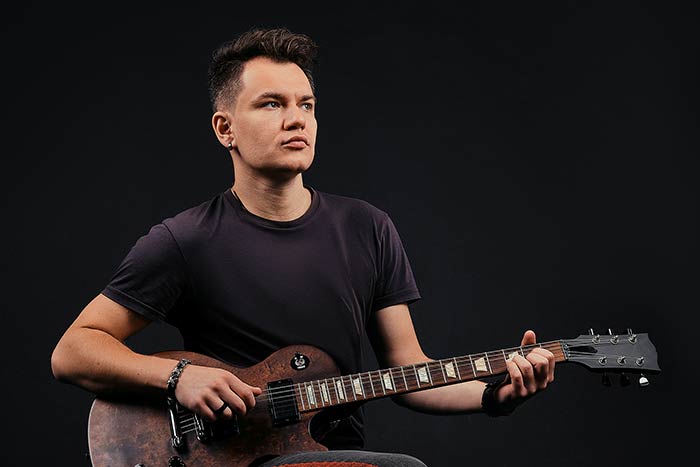Not only is jamming along to your favourite songs at home a whole lot of fun, it is also a great pathway to becoming a better musician! This will improve your ability to stay in time, your dynamic sensibilities, awareness of the vocals, and your overall musicianship.
How playing along to songs will make you a better musician
Staying in time
One of the major skills that you are going to develop from playing along to songs is the ability to stay in time, which is something you aren’t tested on as much when you are playing by yourself solo.
You will notice if any transitions between sections aren’t quick enough, or maybe you’re playing one section of the song at a completely different tempo to the rest. This is a great way to iron out your current song that you are working on to see if it is up to scratch.
I always recommend to my students after working on a piece for a few weeks to start playing along to the track, even if it is slowed down from the original tempo. Certain apps and programs can do this for you (Transcribe!, Audacity) or even YouTube has the ability to playback at 75%, 50% or 25% speed.
This is a great way to work on your skills, starting slow and slowly working up the speed by 10% each week until you are at the original tempo.
Dynamics
Dynamics are a big part of being a musician, as if you play everything at one volume all the time you won’t sound very musical. Playing along to songs will develop this skill without you even noticing, as you will likely follow the dynamics heard in a song.
Typically, the verse of a song will be quieter than the chorus, as we want the chorus to be the most memorable and exciting part (most of the time), so if you are playing along and hear this jump in volume, your natural reaction should be to increase your playing volume by strumming or plucking harder.
You may also try engaging an overdrive or boost pedal to achieve this effect.
Listen to the vocalist!
The most important part of the song when playing in the rock/pop world will most often be the vocalist, which is why all skilled musicians listen carefully to the vocals when playing with them in a band or playing along to a song.
You can receive a lot of musical information by listening to the vocalist: the dynamics and mood of the track, queues for when to move onto the next section, lyrical information which will give you an idea to what the song is all about, and rhythmic information that you may be able to incorporate into your part as a guitarist.
If you were to get lost in the verse and didn’t know when to change your part to move onto the chorus for example, you could listen to the vocalist to know when this change was about to happen. Even if you don’t currently play in a band or jam with friends, you can still develop this skill by playing along to songs.
Overall musicianship
As someone who regularly plays along with songs in their practise sessions, you are likely to have more musical awareness and musicianship. What does this mean exactly? If you are playing along to songs you will be listening to the other instruments in order to stay in time, and as a guitarist you will get this information from the bass and drums.
Locking in with these two instruments will be crucial in delivering a strong performance, but will also allow you to be able to understand what the roles of these two instruments are. Often the bass and drums will be setting the groove for the song, which is the bedrock to making a song sound and feel good.
If you understand how to listen to these, you will be able to lock in and become a unit, rather than sounding like you aren’t playing together. This could mean listening to the drummers high-hat to feel the 8th notes, or locking in with the same riff as the bassist to make the riff sound like one big wall of sound.
Playing with other humans
It is always a great experience and awesome achievement when a musician is at the skill level where they can convincingly play music with others, which can be challenging if you’ve never tried this before. Like anything the best way to develop this skill is to keep doing it, by jamming and rehearsing with others as much as you can.
But what if you don’t have anyone to jam with?
Although you may come across others to jam with in the future, or you could also sign up to a band tuition program in your local area, the best way to develop these skills for the moment is to play along to songs at home. This will replicate the feeling of playing with other humans as closely as possible.
One thing to keep in mind is that the songs that you are playing along to on Spotify are the final mixed, mastered and produced versions that the band/artists decided to release out into the world, not the first jam session or writing session on these songs like you may be doing when you first jump in a room with other humans to play music.
This means that you and everyone else may be (and probably will be) making mistakes, playing out of time, or getting lost in the structure!
A skilled musician will know how to come back in confidently and recover from their mistakes, rather than becoming overwhelmed with not knowing their part. This is another skill that you can improve on by playing along to songs at home in your own practise sessions.










